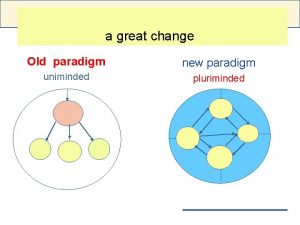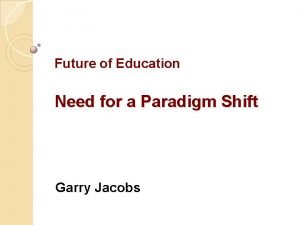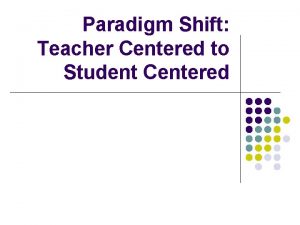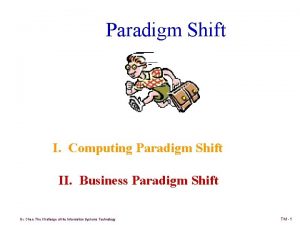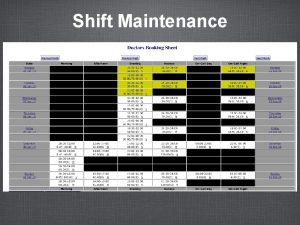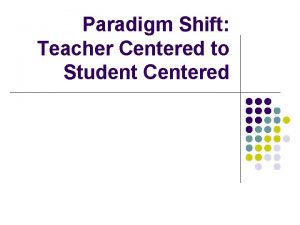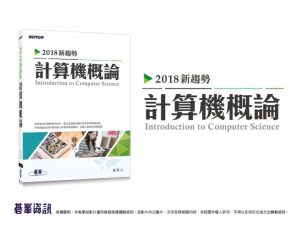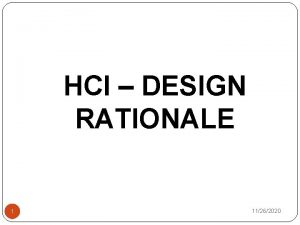Economic rationale for a paradigm shift in the












- Slides: 12

Economic rationale for a ‘paradigm shift’ in the climate affair and its consequences Workshop "Innovative solutions for climate finance, the energy transition and a EU narrative" Jean-Charles Hourcade Baptiste Perissin-Fabert 1

Lessons from Kyoto’s unfinished business • A ‘mental map’ : a world cap and trade system with unique carbon price through all sectors and countries with compensating transfers • a map which does not indicate that significant carbon prices: - hurt emerging economies over the short run (higher share of energy expenditures in households budget and in production costs) - do not prevent them to be locked - in carbon intensive growth pattern (carbon prices alone can’t shift urban dynamics, building and transport infrastructures) • a map which ignores that technologies are not selected in function of their levelized costs in a ‘shareholder’ regime of firm management • ‘fair’ compensating transfers are difficult to negotiate in a ‘burden sharing’ approach which: - Focus of the debate on who picks the (very few) remains? - Lose sight of the benefits of cooperation

Why price-signals does not suffice. Why ‘finance’ matters in an uncertain world

The meaning of Cancun’s « paradigm shift » • From fair “burden sharing” to “equitable access to development” • Nationally Appropriate Mitigation Action aligned with development objectives (Bali) • The Global Climate Fund as a tool to meet, at least in part, the common but differentiated responsibility principle (CBDR) To be situated in a specific Intellectual context in the ‘aftermath? ’ of the 2008 financial crisis: « Green Growth » as a new form of ‘Marshall Plan’ 4

Climate Finance at risks of the distrust? • A context of ’depression economics’, ‘public debts’ and rebalancing of the world economic equilibrium can only: – exarcerbate the ‘donor fatigue’ in the Annex 1 countries – Reinforce the social resistance to carbon pricing (explicit or implicit) • Limitations of current climate finance initiatives: • CDM: uncertainty about carbon prices and problems of counterfactual • Low leverage ratio on 1€ or $ of low carbon Public Finance Mechanisms • Fragmentation • A problem of orders of magnitude: a funding gap of 90%? ? § leveraged invest costs< upfront invest costs < induced invest costs § Redirected invest high times higher than incremental invest costs 5

The economic rationale for turning the question upside down Can we afford climate policies <-> No debt bailout and economic recovery w/o climate policy • A shift of less than 1% of the GDP is needed to fund incremental costs • Concerned sectors represent around 40% of the GCF and some are critical for inclusive growth • The redirection of investments concerns about 8 -9% of the GCF • Climate policies can contribute to a stimulus for a sustainable and inclusive growth recovery finance • But climate finance should not remain a marginal department of global finance • Is linking two sensitive issues is a diplomatic non-starter? ignoring the short term constraints on economies leads to a diplomatic dead-end 6

Turning the question upside-down The world economy between ‘instable growth’ and ‘depression economics’ • « Saving glut » and « Buridan’s Donkey » dilemma for investors • Risks of depression vs risks of re-unleashing speculative bubbles • Banking systems still fragile and in process of deleveraging • Tensions due to a « currency cold war » Any new growth regime implies • To redirect savings towards infrastructure and industry instead of speculation • a more inward-oriented industrialisation • A more resilient financial and monetary order Low carbon finance is a good candidate to contribute to sustainable economic recovery with …. less « ups and downs » 7

The agenda • Inject liquidity, provided that it is used to fund low-carbon investments (LCI) • Awake the Buridan’s Donkey: public guarantee to lower the risks of LCIs and enhance the solvency of low-carbon entrepreneurs’ • Make the Banking System interested in funding LCIs: – banks can better face their prudential constraints and improve their riskweighted assets (RWA) • Make institutional investors interested in carbon-based financial products to attract savings (instead of real estates and others …) • Trigger a wave of LCI in infrastructure – Revitalizing the industrial fabric in OECD countries – More inward-oriented growth in emerging economies 8

The SVC, a notional value not a carbon price 1. A signal of the political will ‘to do sth’ against climate change 2. It increases over time -> counterbalance the role of discount rate against investing in long lived capital stocks 3. Surrogate of a « gobal price signal » to avoid the fragmentation of climate finance 4. Politically negotiable : - The Indian peasant will not be obliged to pay it to irrigate its fields - The SVC differs theoretically across countries but is conditional upon the content of their development policies (Shukla) - Countries may thus accept similar SVC for different reasons, including various views of the co-benefits of climate mitigation 9

Sketching a possible mechanism 1. Its anchor : an agreement, under UNFCCC on a Social Value of Avoided Carbon Emissions (SVC) 2. Voluntary commitments by governements, over every five years to back a quantity of carbon assets, 3. Central banks open drawing rights on these carbon assets and accept as repayment carbon certificates (CC) to fund LCIs 4. After certification of project completion: asset swap …. CCs are turned into carbon assets that appear on the balance sheet of central banks (like gold), banks or entreprises 5. An Independent Supervisory Body 1. Negotiates with governments which NAMAs these LCI should contribute to 2. Secures the « statistical additionality » of the investments 10


To be developed later 1. A deal on the « Social Cost of Carbon » 2. Money creation backed on real wealth (Avoided climate risks, Infrastructure investments) 3. No risk of ‘speculative bubble’ on carbon 4. Normative targets with when flexibility and back pulling force 5. A concrete way to secure « equitable access to development » by supporting NAMAs’ full incremental costs‘ by a real inflow 6. A respected CBDR that can be progressively extented to the most advanced emerging economies 7. Can support any carbon trading mechanism and bottom-up initiatives (sectorial arrangements in the industry, cities inititiatives …. ) and stabilize the ‘business context’ 8. Can be palatable for ‘non climate’ concerned decision-makers 12
 Old paradigm vs new paradigm examples
Old paradigm vs new paradigm examples Paradigm shift in technology
Paradigm shift in technology Paradigm shift in education
Paradigm shift in education Njctl math
Njctl math Paradigm shift meaning
Paradigm shift meaning Paradigm shift from women studies to gender studies
Paradigm shift from women studies to gender studies Paradigm shift kuhn
Paradigm shift kuhn Paradigm shift in technology
Paradigm shift in technology Paradigm shift example
Paradigm shift example Conclusion of ict in education
Conclusion of ict in education Paradigm shift teacher-centered to student-centered
Paradigm shift teacher-centered to student-centered Paradigm shift in education
Paradigm shift in education Crime tree
Crime tree
